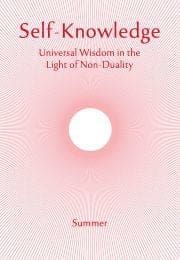Nicholas of Cusa
Nicholas of Cusa (1401-1464) was born in Kues (Cusa) in south-western Germany, and rose as an administrator, bishop and cardinal of the Roman Catholic Church, as well as being a prolific writer, whose turn of thought and philosophical speculations remain of relevance to students of the non-dual teachings. The present article will focus on some aspects of his work as a philosopher rather than detailing his role as an ecclesiastical reformer. He was known to contemporaries as ‘Cusanus’.
That Cusanus was, on any reckoning, a remarkable intellectual figure can be seen from the following facts about his life. He was educated among the ‘Brothers of the Common Life’ at Deventer, that centre of holy living founded by Gerard Groote, the friend of Ruysbroeck, to which the world owes one of its greatest spiritual classics, the Imitation of Christ. Throughout his immensely active and practical life, Cusanus remained at heart a contemplative, valued by his contemporaries chiefly as an authority on the mystical writers of the past, and earning his place among the great teachers of the contemplative life.
Later he went to Heidelberg, already astir with the ‘new physics’ proclaimed by the Ockhamists, and then for six years to Padua, where he studied, besides Canon Law, geometry, medicine and astronomy. Here, also, he mingled with the men of the early Renaissance: and if his self-styled ‘barbaric’ Latin prose shows few discernible signs of the influence of Petrarch, it was from this time that his reputation as a manuscript-hunter, amateur classical philologist and collector of scientific instruments began.
He later turned his mathematical and astronomical studies to excellent account. His own works on these subjects were to be studied by Copernicus, and several decades before the latter he put forward the ‘grounded hypothesis’ that both the earth and the sun were moving, that the earth was of the form of an irregular sphere, and that it revolved on its axis while at the same time moving along an elliptical path. His thought broke clean through the geocentric world-view of Mediaeval tradition, and he represented the universe as potentially indefinite (not infinite) in extent, composed throughout of particles in relative motion. His speculations on the identity of the line and the curve when either infinitely great or infinitely small were a step in the chain leading to the eventual discovery of analytical geometry and the calculus.
Besides his many works on philosophy and speculative mysticism, he wrote much on mathematics, a work called Experiments in Statics, treatises on optics and mapmaking and a reformed Calendar, several works on political theory, Canon Law and Dogmatic Theology, and, after travelling about to find the leading Arabists of the day, a treatise on the Quran in which he tried to harmonise the latter with Christian doctrine. This catalogue represents but a small part of Cusanus’s literary output, which was for the most part thrown off at odd moments in the course of his role as a preacher and the conscientious fulfilment of various offices in the Church.
Let us now examine some of Cusanus’s philosophical opinions. Cusanus was particularly zealous to preserve the utter transcendence of God. He was the first to apply the term ‘absolute’ regularly and systematically to God. ‘Between the infinite and the finite’, he said, ‘there is no common measure’. If our thinking starts from empirical premises, it must remain ever within the realm of the finite. A further inference based on a finite thought must itself be finite or it could not stand in any intelligible relation to its predecessor. Consequently we have not the right to assume that our rational thought can establish a continuous hierarchy of principles that can bridge the gulf between absolute being and empirical being. The only relation that can be said to subsist between the conditioned realm and the unconditioned is that of total mutual exclusion. The only predicates that fit the Absolute are negations of empirical predicates.
This ‘negative path’ in the approach to God was, of course, nothing new in itself. It is found in many of the great schoolmen, including St Thomas Aquinas himself. But from the standpoint of Cusanus, here doubtless influenced by Ockham and his school, the earlier thinkers had been insufficiently critical in assuming that there was also an affirmative path which gave us rational knowledge of a hierarchical structure in Being. For Cusanus, our thoughts can never be identical with the things they are thoughts of. For they are thoughts and the things things. But if our thoughts are only like things, other thoughts could be had more like the things, and yet other thoughts yet more like the things and so to infinity. Our thought relates to truth like a polygon to a circle. One may increase the sides in a polygon as much as one will, but as long as it remains a polygon it will never coincide with a circle.
Cusanus held that all human knowledge is conjecture. It consists in hypotheses which will certainly be supplanted by better hypotheses one day. If the human mind approaches certainty anywhere, however, it is in the realm of mathematics. According to Cusanus, the cosmos may be interpreted as due to quantitative distinctions arising in the distribution of four basic all-pervasive elements, earth, air, fire and water. On this basis, clearly conceived as a merely hypothetical one, Cusanus liberated cosmology from bondage to the closed Aristotelian system of concentric spheres. The universe, he held, is limited in actual realisation at any given point in time but capable of indefinite expansion. Moreover, since there can be no perfect sphere in the empirical realm, it is useless to search for the centre of the universe by intellectual means, let alone to posit the earth as that centre. The centre of the universe is God, who can be discovered only by spiritual means.
Subscribe or enrol for free guest access to read all of this article and Self-Knowledge online.
Already subscribed or enrolled? Log in:


